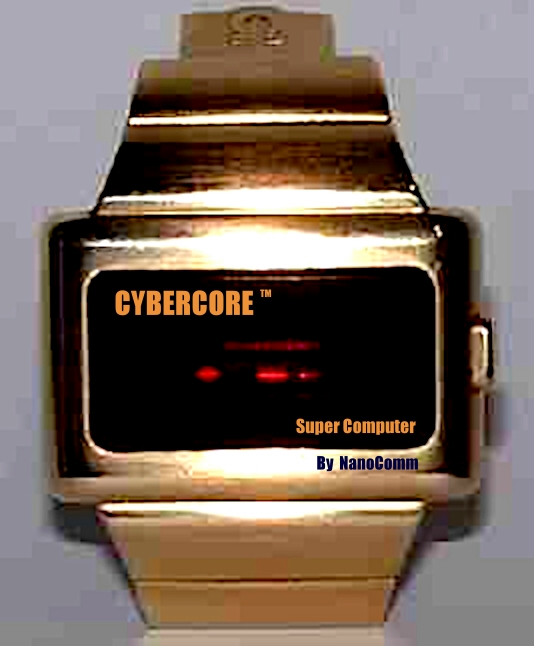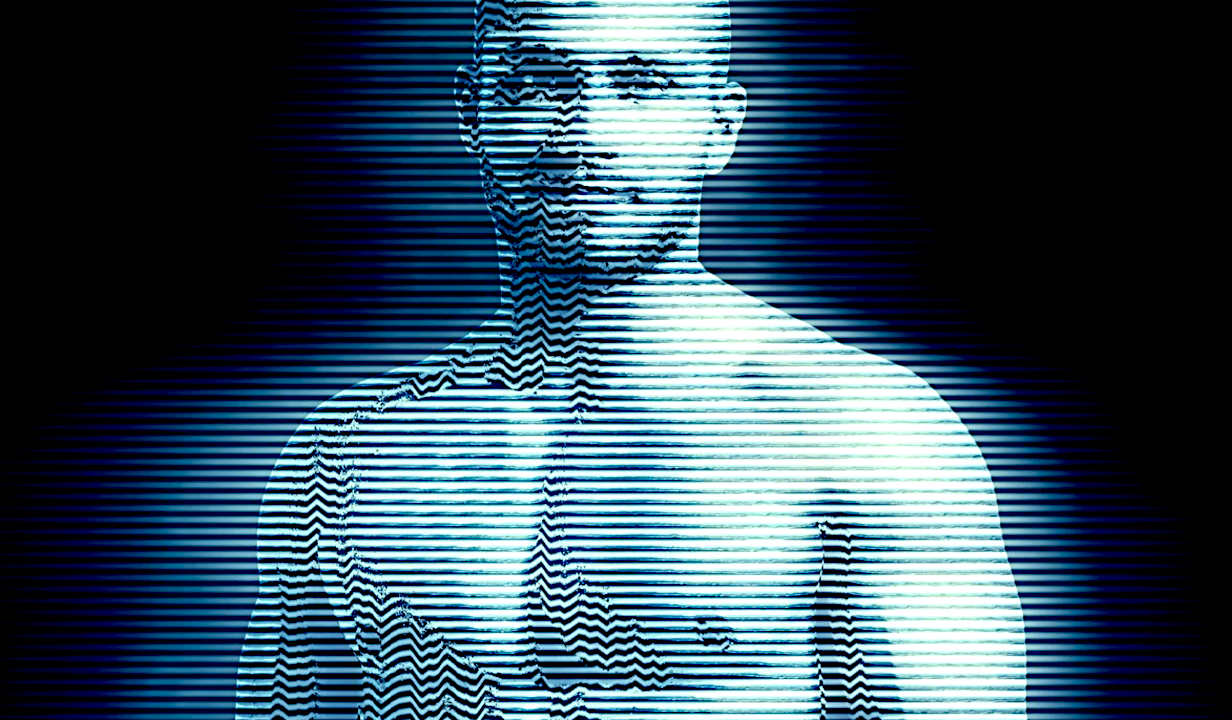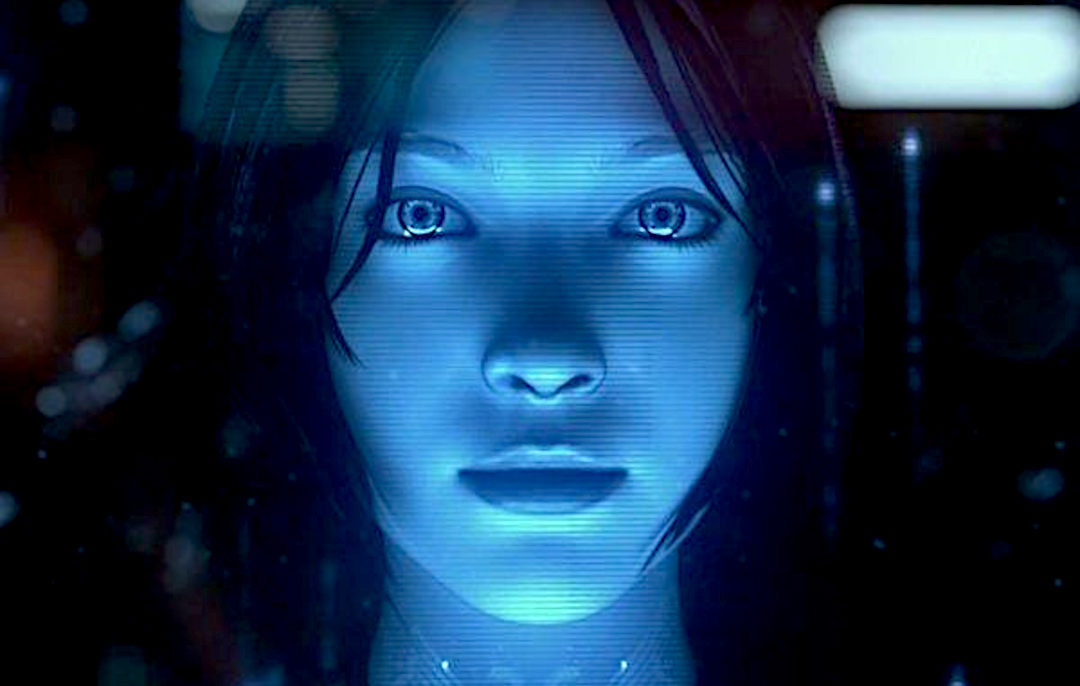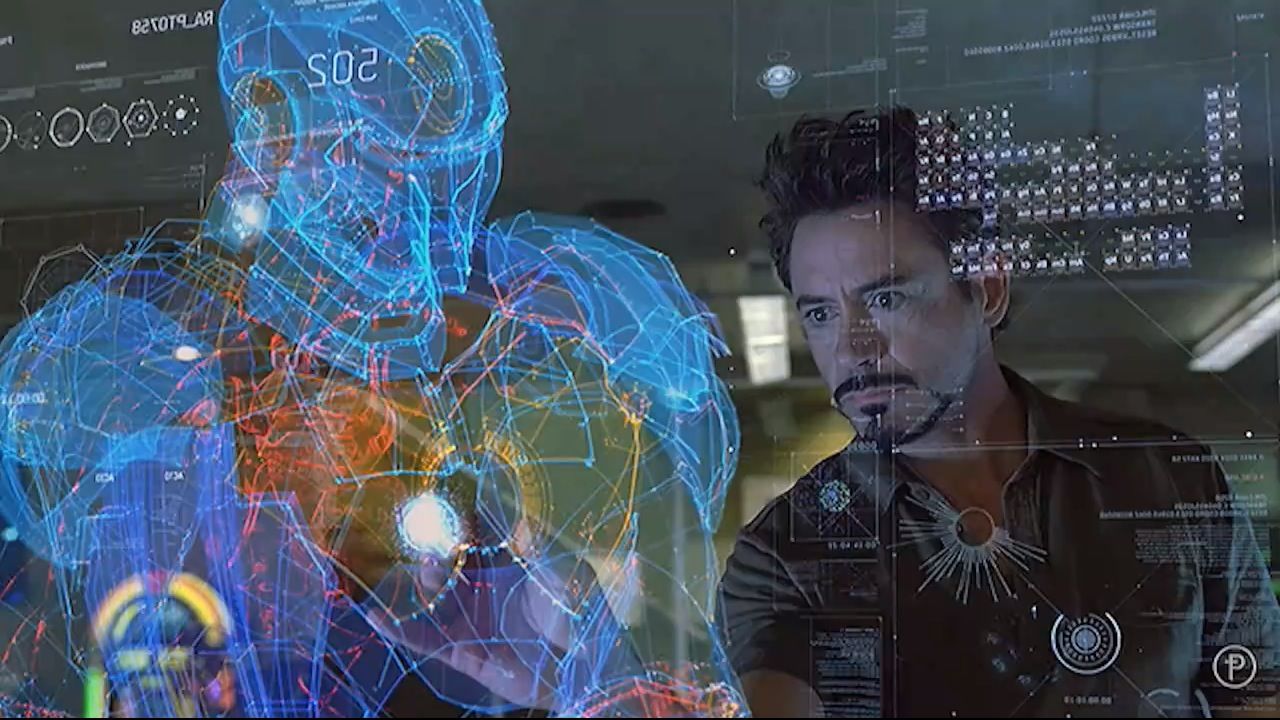
HAL
- Is an audio visual computer interface for the onboard
artificial intelligence that makes the Elizabeth Swann so
efficient in search and rescue, survey and energy management
for effective navigation.
Onboard
the Elizabeth
Swann, and integrated into the ship's systems,
is an Artificially Intelligent computer program called Hal,
manifesting itself in a number of ways to help the vessel
and the crew navigate difficult circumstances.
Hal
can materialize in various locations as a holographic 3D talking head, or
appear on computer screens. Hal uses stereoscopic audio to
supplement the program's audio-visual interface with humans,
to be more user friendly.
When
Hal is connected to NanoComm's CyberCore™ super computer,
the audio visual interface reaches a new level of AI, able
to hack into NORAD
and other military installations, and take over hostile
missiles and drones - returning them to base, or targeting
other internationally illegal geographical regions, such as Guantánamo
Bay.

OMEGA 1600 TC1 TIME COMPUTER
- Omega "Time Computer I," or TC1 is the first LED watch that Omega
made available for sales in Europe.
HISTORY
Holography is a photographic technique that records the light scattered from an object, and then presents it in a way that appears three-dimensional. Holograms
crop up in movies such as "Star Wars" and "Iron Man," and
"Blade
Runner 2049," but the technology has not quite caught up to movie magic,
as yet.
To create a hologram, you need an object (or person) that you want to record; a laser beam to be shined upon the object and the recording medium; a recording medium with the proper materials needed to help clarify the image; and a clear environment to enable the light beams to intersect.
A laser beam is split into two identical beams and redirected by the use of mirrors. One of the split beams, the illumination beam or object beam, is directed at the object. Some of the light is reflected off the object onto the recording medium.
The second beam, known as the reference beam, is directed onto the recording medium. This way, it doesn't conflict with any imagery that comes from the object beam, and coordinates with it to create a more precise image in the hologram location.
The two beams intersect and interfere with each other. The interference pattern is what is imprinted on the recording medium to recreate a virtual image for our eyes to see.

Holograms are generally static. Recent presentations, such as CNN's special effect of a reporter appearing live from another location, and the late Tupac Shakur "appearing live" at a music festival, are not "true" holograms.
However, new holographic technology is being developed that projects 3D images from another location in real time. The images are also static, but they are refreshed every two seconds, creating a strobe-like effect of movement. The researchers hope to improve the technology over the next few years to bring higher resolution and faster image streaming.
In March 2013, it was announced that a group of researchers from Hewlett Packard Laboratories has developed glasses-free, multi-perspective, 3D display technology for mobile devices.

ARTIFICIAL
- An interface such as the above, may feel creepy to people
onboard the Elizabeth Swann.
Holograms enable personal interactions that aren't possible elsewhere. Because,
for example, a HoloLens knows where it is in the world, a holographic character can look at you directly in the eyes and start a conversation with you.
A hologram can also interact with your surroundings. For example, you can place a holographic bouncing ball above a table. Then, with an air tap, watch the ball bounce, and make sound as it hits the table.
Holograms can also be occluded by real-world objects. For example, a holographic character might walk through a door and behind a wall, out of your sight.
Tips for integrating holograms and the real world
Aligning to gravitational rules makes holograms easier to relate to and more believable. For example: Place a holographic dog on the ground & a vase on the table rather than have them floating in space.
Many designers have found that they can integrate more believable holograms by creating a "negative shadow" on the surface that the hologram is sitting on. They do this by creating a soft glow on the ground around the hologram and then subtracting the "shadow" from the glow. The soft glow integrates with the light from the real world. The shadow is used to ground the hologram in the environment.
HOLOGRAPHIC ART
Early on, artists saw the potential of holography as a medium and gained access to science laboratories to create their work. Holographic art is often the result of collaborations between scientists and artists, although some holographers would regard themselves as both an artist and a scientist.
Salvador Dalí claimed to have been the first to employ holography artistically. He was certainly the first and best-known surrealist to do so, but the 1972 New York exhibit of Dalí holograms had been preceded by the holographic art exhibition that was held at the Cranbrook Academy of Art in Michigan in 1968 and by the one at the Finch College gallery in New York in 1970, which attracted national media attention. In Great Britain, Margaret Benyon began using holography as an artistic medium in the late 1960s and had a solo exhibition at the University of Nottingham art gallery in 1969. This was followed in 1970 by a solo show at the Lisson Gallery in London, which was billed as the "first London expo of holograms and stereoscopic paintings".
During the 1970s, a number of art studios and schools were established, each with their particular approach to holography. Notably, there was the San Francisco School of Holography established by Lloyd Cross, The Museum of Holography in New York founded by Rosemary (Posy) H. Jackson, the Royal College of Art in London and the Lake Forest College Symposiums organised by Tung Jeong. None of these studios still exist; however, there is the Center for the Holographic Arts in New York and the HOLOcenter in Seoul, which offers artists a place to create and exhibit work.
During the 1980s, many artists who worked with holography helped the diffusion of this so-called "new medium" in the art world, such as Harriet Casdin-Silver of the United States, Dieter Jung of Germany, and Moysés Baumstein of Brazil, each one searching for a proper "language" to use with the three-dimensional work, avoiding the simple holographic reproduction of a sculpture or object. For instance, in Brazil, many concrete poets (Augusto de Campos, Décio Pignatari, Julio Plaza and José Wagner Garcia, associated with Moysés Baumstein) found in holography a way to express themselves and to renew Concrete Poetry.
A small but active group of artists still integrate holographic elements into their work. Some are associated with novel holographic techniques; for example, artist Matt Brand employed computational mirror design to eliminate image distortion from specular holography.
The MIT Museum and Jonathan Ross both have extensive collections of holography and on-line catalogues of art holograms.

HOLOGRAPHIC DATA STORAGE
Holographic data storage is a technique that can store information at high density inside crystals or photopolymers. The ability to store large amounts of information in some kind of medium is of great importance, as many electronic products incorporate storage devices. As current storage techniques such as Blu-ray Disc reach the limit of possible data density (due to the diffraction-limited size of the writing beams), holographic storage has the potential to become the next generation of popular storage media. The advantage of this type of data storage is that the volume of the recording media is used instead of just the surface. Currently available SLMs can produce about 1000 different images a second at 1024×1024-bit resolution. With the right type of medium (probably polymers rather than something like LiNbO3), this would result in about one-gigabit-per-second writing speed. Read speeds can surpass this, and experts believe one-terabit-per-second readout is possible.
In 2005, companies such as Optware and Maxell produced a 120mm disc that uses a holographic layer to store data to a potential 3.9TB, a format called Holographic Versatile Disc. As of September 2014, no commercial product has been released.
Another company, InPhase Technologies, was developing a competing format, but went bankrupt in 2011 and all its assets were sold to Akonia Holographics, LLC.
While many holographic data storage models have used "page-based" storage, where each recorded hologram holds a large amount of data, more recent research into using submicrometre-sized "microholograms" has resulted in several potential 3D optical data storage solutions. While this approach to data storage can not attain the high data rates of page-based storage, the tolerances, technological hurdles, and cost of producing a commercial product are significantly lower.

HAL
- Is very fond of Arnold Schwazenegger in the Terminator
series of films. For this reason the AI often adopts the
famous actors image to interface with the crew and visitors
onboard the Elizabeth Swann.
HOLOGRAPHY IN FICTION
Holography has been widely referred to in movies, novels, and TV, usually in science fiction, starting in the late 1970s. Science fiction writers absorbed the urban legends surrounding holography that had been spread by overly-enthusiastic scientists and entrepreneurs trying to market the idea. This had the effect of giving the public overly high expectations of the capability of holography, due to the unrealistic depictions of it in most fiction, where they are fully three-dimensional computer projections that are sometimes tactile through the use of force fields. Examples of this type of depiction include the hologram of Princess Leia in Star Wars, Arnold Rimmer from Red Dwarf, who was later converted to "hard light" to make him solid, and the Holodeck and Emergency Medical Hologram from Star Trek.
Holography served as an inspiration for many video games with the science fiction elements. In many titles, fictional holographic technology has been used to reflect real life misrepresentations of potential military use of holograms, such as the "mirage tanks" in Command & Conquer: Red Alert 2 that can disguise themselves as trees. Player characters are able to use holographic decoys in games such as Halo: Reach and Crysis 2 to confuse and distract the enemy. Starcraft ghost agent Nova has access to
"holo decoy" as one of her three primary abilities in Heroes of the Storm.
Fictional depictions of holograms have, however, inspired technological advances in other fields, such as augmented reality, that promise to fulfill the fictional depictions of holograms by other means.
In Encanto, Bruno Madrigal's vision is holographic.
REFERENCES
https://docs.microsoft.com/en-us/windows/mixed-reality/discover/hologram




